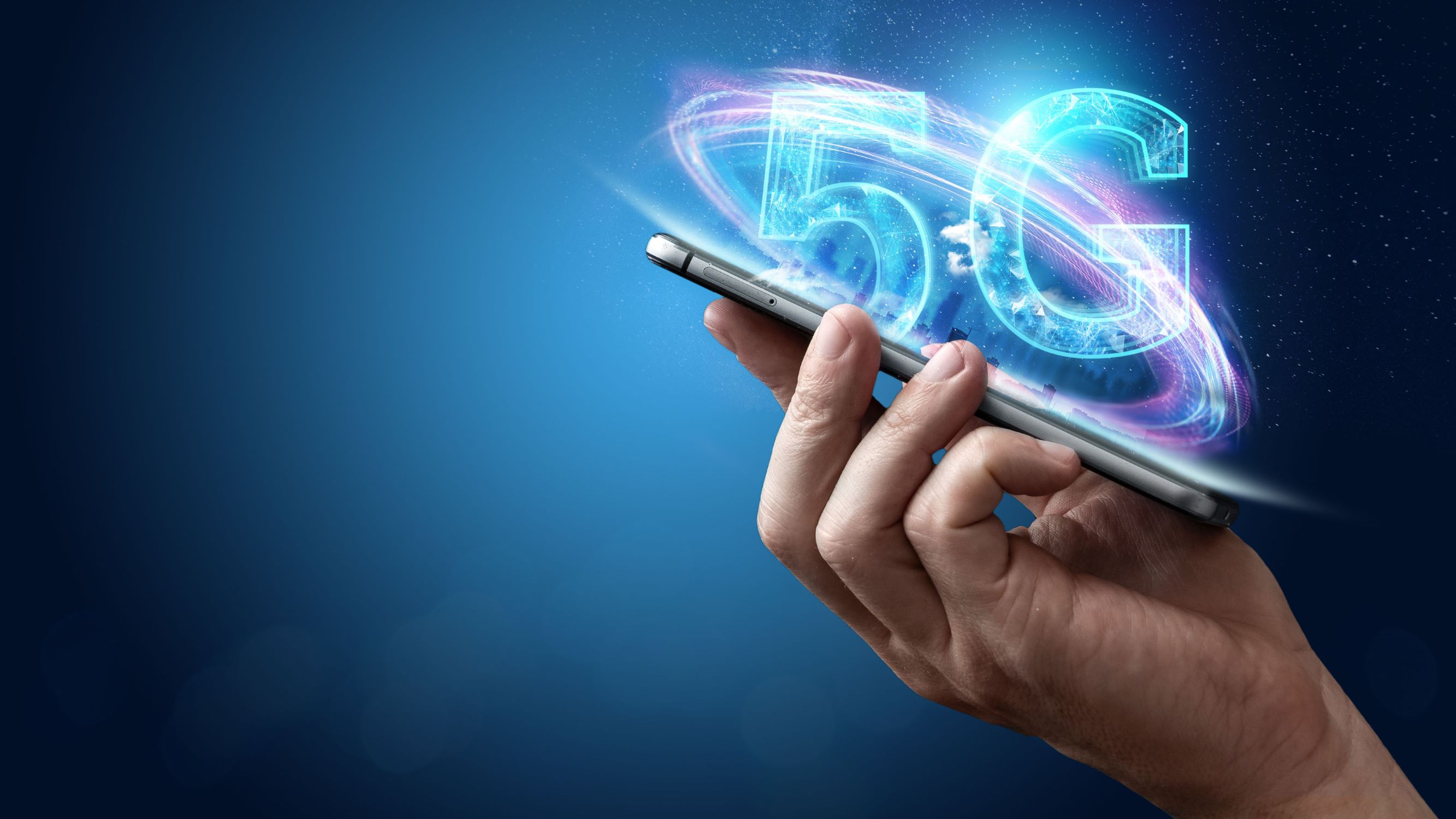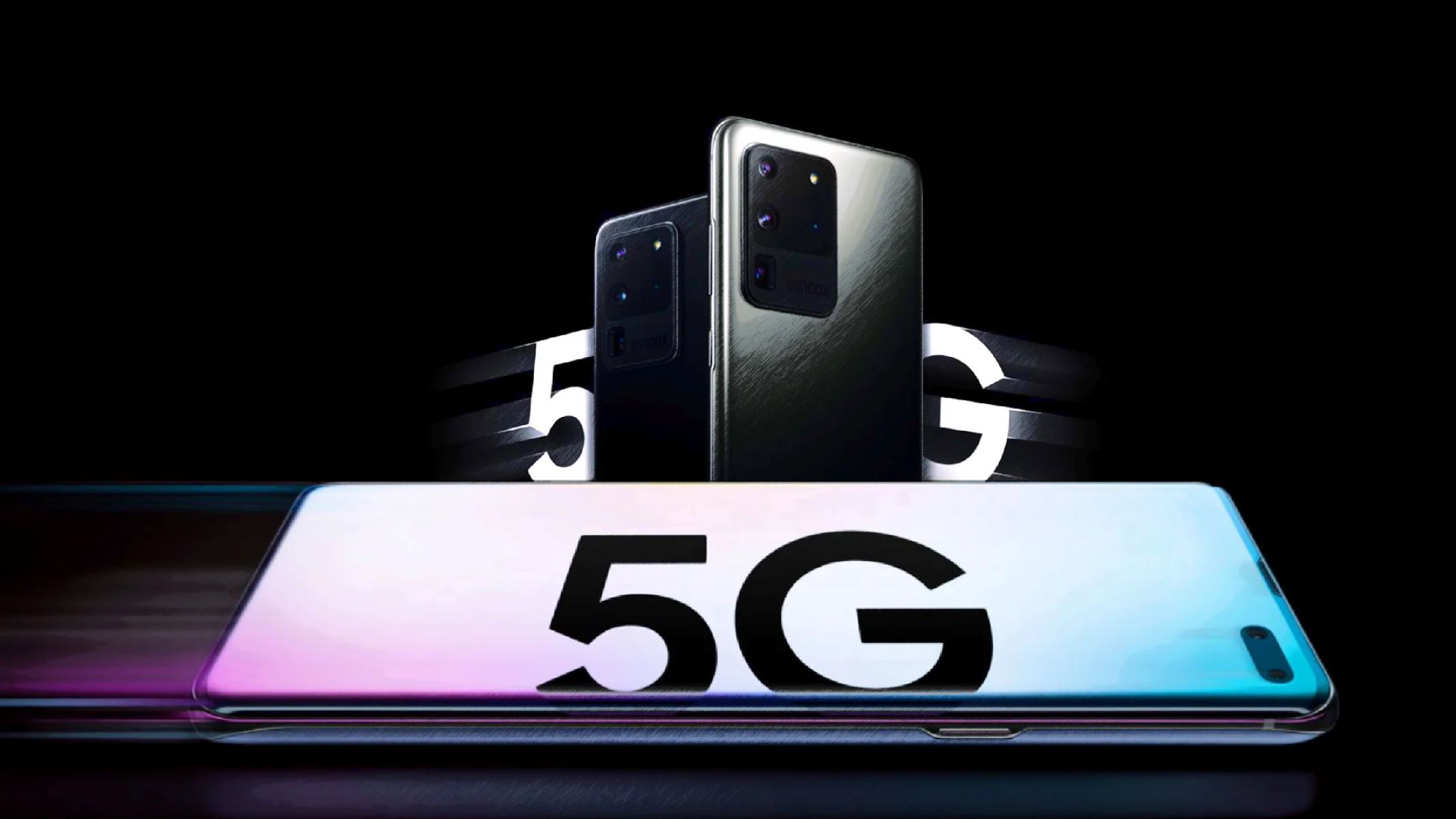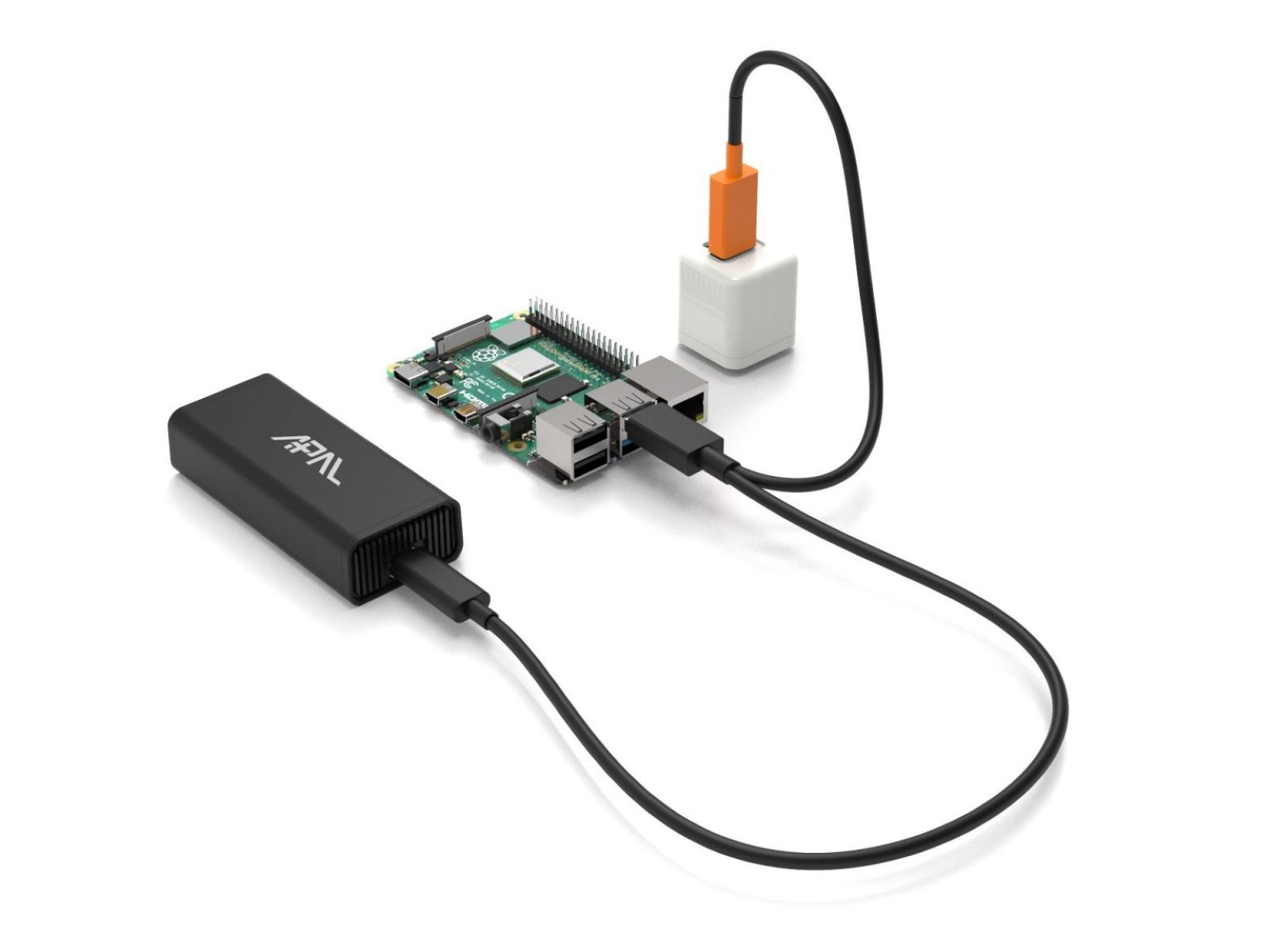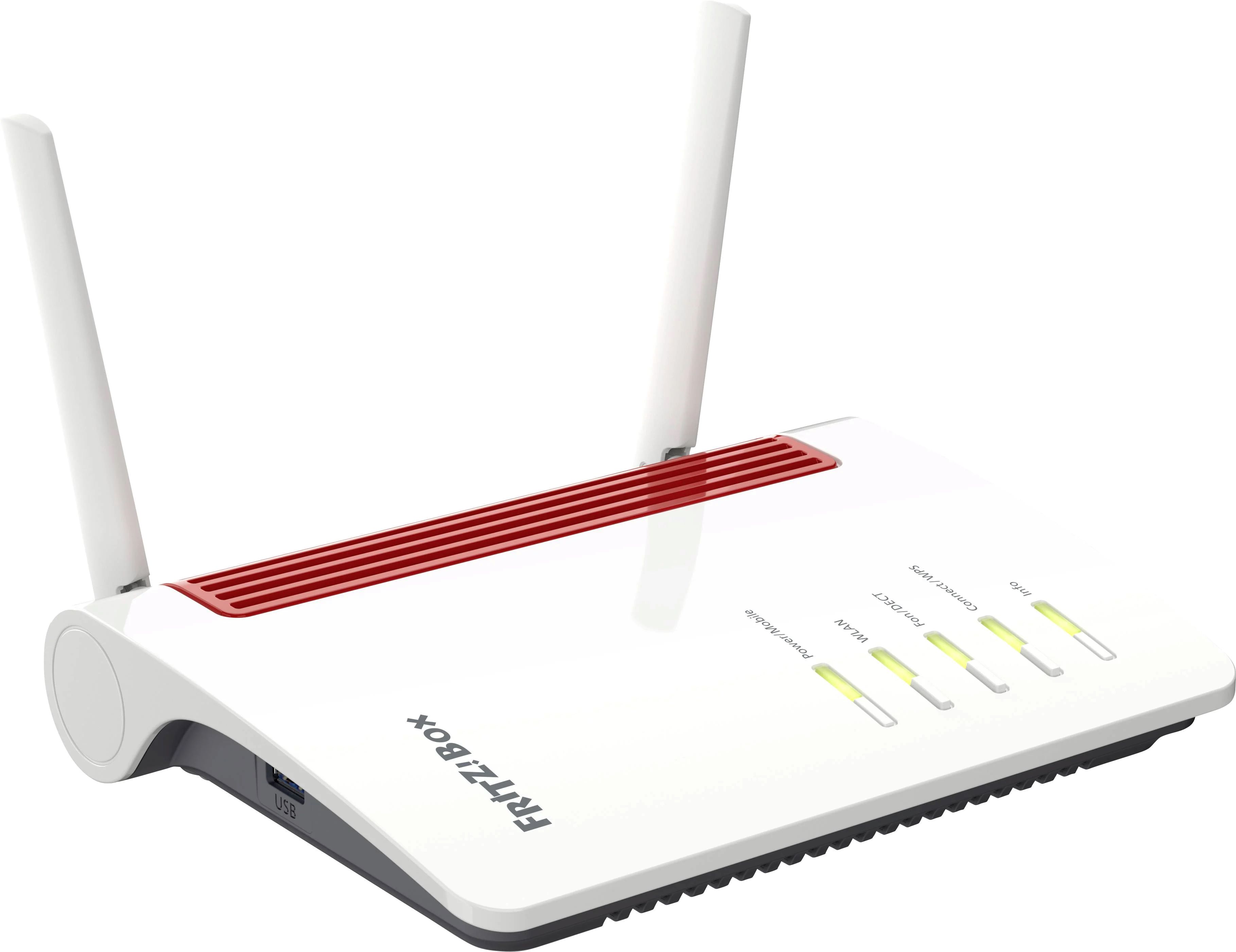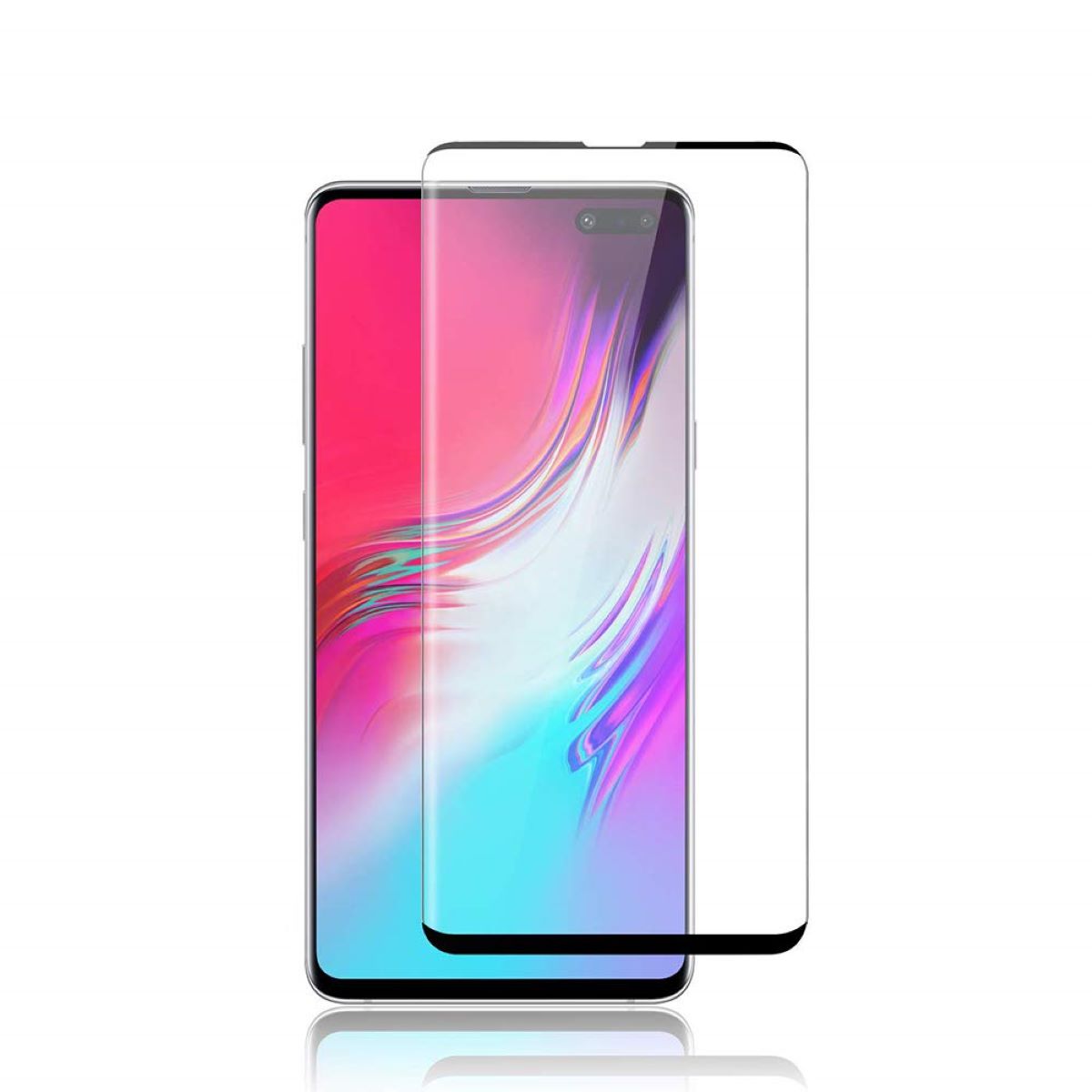Introduction
As technology continues to advance at a rapid pace, the arrival of 5G has captured the attention of tech enthusiasts and industry experts alike. With promises of faster speeds, lower latency, and enhanced capacity, 5G is set to revolutionize the way we connect and communicate in our increasingly digital world.
In this article, we will delve into the world of 5G and explore the incredible potential it holds. From its impact on mobile networks to its applications in various industries, we will uncover how 5G technology is poised to reshape the future.
But what exactly is 5G? In simple terms, it stands for fifth-generation wireless technology, which succeeds 4G LTE. Unlike its predecessors, 5G operates on a higher frequency band, allowing for more data to be transmitted at faster speeds. This opens up a whole new world of possibilities and unleashes the potential of technologies such as the Internet of Things (IoT), autonomous vehicles, and smart cities.
So buckle up and prepare for the 5G revolution. In the following sections, we will dive into the various aspects of this powerful technology and examine how it will transform the way we live, work, and interact with our digital ecosystem.
What is 5G?
5G, short for fifth-generation, is the latest generation of wireless technology that is set to bring significant advancements in connectivity. It aims to provide faster speeds, lower latency, and enhanced capacity compared to previous wireless technologies like 4G LTE.
At its core, 5G operates on a higher frequency band, enabling the transfer of larger amounts of data at speeds that were previously unimaginable. This means that users can experience lightning-fast download and upload speeds, making activities such as streaming high-definition videos, downloading large files, and playing online games seamless.
But 5G is more than just faster internet speeds. It also promises lower latency, which refers to the time it takes for data to travel from one device to another. With 5G, latency is expected to be reduced to milliseconds, enabling real-time communication and instantaneous responses. This is particularly crucial for applications that require instant feedback, such as autonomous vehicles and remote surgeries.
Furthermore, 5G offers enhanced capacity, meaning it can support a higher number of connected devices at once. This capacity boost is essential in the era of the Internet of Things (IoT), where billions of devices are interconnected. From smart homes and wearables to industrial automation and smart cities, 5G will provide the necessary infrastructure to power these interconnected networks.
It is important to note that 5G is not meant to replace 4G LTE entirely but rather complement it. While 4G LTE will continue to be utilized for broader coverage, 5G will be implemented in densely populated areas and locations where high-speed connectivity is required, such as urban centers and stadiums.
In summary, 5G is the next step in wireless technology, bringing faster speeds, lower latency, and enhanced capacity. It is set to revolutionize various industries and enable the seamless integration of advanced technologies. With its immense potential, 5G is poised to transform the way we live, work, and connect in the digital age.
Faster Speeds
One of the key advantages of 5G technology is its ability to deliver blazing-fast speeds. With download speeds reaching up to 10 gigabits per second (Gbps), 5G is set to revolutionize the way we consume and access content.
Gone will be the days of long buffering times and frustratingly slow downloads. With 5G, streaming high-definition videos, downloading large files, and playing online games in real-time will become seamlessly smooth experiences.
Not only will faster speeds enhance our entertainment activities, but they will also have a significant impact on various industries. For example, the healthcare sector can leverage 5G to enable real-time telemedicine consultations, remote monitoring, and even remote surgeries. This speed and reliability are invaluable when it comes to providing critical healthcare services to remote areas or in emergencies.
In addition, remote working will be revolutionized by 5G technology. With faster speeds, employees can access large files and collaborate on projects in real-time, regardless of their location. This level of connectivity will enable remote workers to be just as efficient and productive as if they were in the office.
Moreover, faster speeds offered by 5G will fuel advancements in augmented reality (AR) and virtual reality (VR) technologies. AR and VR applications require large amounts of data to create immersive experiences. With 5G, users can enjoy seamless and realistic AR and VR experiences, whether it’s for gaming, training, or remote collaboration.
Overall, the faster speeds provided by 5G technology will have a profound impact on various industries, from entertainment and healthcare to remote working and immersive experiences. By eliminating lag and reducing latency, 5G will unlock a new level of connectivity that will enhance our daily lives in ways we never thought possible.
Lower Latency
Another key advantage of 5G technology is its ability to significantly reduce latency. Latency refers to the delay between when data is sent from a device to when it reaches its intended destination. With 5G, latency is expected to be reduced to mere milliseconds, enabling real-time communication and instantaneous responses.
This ultra-low latency has tremendous implications across various industries. For example, in the world of autonomous vehicles, 5G will enable cars to communicate with each other and with traffic infrastructure in real-time. This instantaneous exchange of information will significantly enhance road safety and prevent accidents.
In the healthcare industry, low latency provided by 5G technology will revolutionize remote surgeries and telemedicine. Surgeons can operate on patients in different locations, with minimal delay, thanks to the reliable and fast communication enabled by 5G networks. Furthermore, doctors can remotely monitor patients and provide real-time guidance, improving healthcare access and outcomes.
The gaming industry will also benefit greatly from 5G’s low latency. Online gaming will become more responsive and seamless, allowing players to compete in real-time with opponents from around the world. This low-latency gaming experience will enhance the overall gameplay and take multiplayer gaming to new heights.
Additionally, low latency enabled by 5G will impact the industrial sector. The manufacturing industry can leverage 5G for real-time monitoring, control systems, and remote maintenance of machinery and equipment. This will streamline operations, increase efficiency, and reduce downtime.
Furthermore, virtual reality (VR) and augmented reality (AR) applications will greatly benefit from the reduced latency of 5G. Users can enjoy more immersive and realistic experiences without experiencing lag or delays. This opens up new possibilities for training, simulation, and entertainment.
In summary, lower latency provided by 5G technology is a game-changer for various industries. From autonomous vehicles to healthcare, gaming to industrial applications, the ultra-low latency enables real-time communication and responses, improving safety, efficiency, and overall user experience.
Enhanced Capacity
One of the key advantages of 5G technology is its ability to handle a significantly higher capacity of connected devices compared to previous wireless technologies. With the proliferation of the Internet of Things (IoT) and the increasing number of devices requiring connectivity, the enhanced capacity of 5G is crucial for a seamless and interconnected digital ecosystem.
Whereas 4G LTE networks have limitations when it comes to supporting a massive number of devices simultaneously, 5G overcomes this obstacle with its ability to handle a vast number of connected devices within a given area.
By leveraging advanced techniques such as network slicing and massive MIMO (Multiple-Input, Multiple-Output) technology, 5G networks can allocate the necessary resources to each connected device efficiently. This ensures that there is no degradation in performance or slowdown in data transfer, even in densely populated areas.
This enhanced capacity has wide-ranging implications, especially with the rapid growth of IoT devices. Smart homes, smart cities, industrial automation, and wearable devices are just a few examples of the IoT applications that can benefit from the seamless connectivity provided by 5G.
In a smart home scenario, for instance, where various devices such as home appliances, security systems, and entertainment systems are connected, 5G can support the smooth operation of these devices without any lags or connectivity issues.
Industrial sectors also stand to benefit from the enhanced capacity of 5G networks. With the rise of Industry 4.0 and the integration of automation and IoT technologies, 5G enables seamless communication and coordination between machines, increasing productivity and efficiency.
Furthermore, the technology behind 5G supports the implementation of smart cities by connecting various urban infrastructures such as traffic lights, surveillance cameras, and public transportation systems. This connectivity allows for better management of resources, optimized traffic flow, and improved quality of life for citizens.
In summary, the enhanced capacity of 5G technology enables seamless and efficient connectivity for a vast number of devices in various applications. From smart homes and industrial automation to smart cities, 5G paves the way for a future where devices are connected without constraints, ensuring a smooth and interconnected digital ecosystem.
Internet of Things (IoT)
The Internet of Things (IoT) refers to the interconnected network of devices, objects, and systems that have the ability to exchange data and communicate with one another. The IoT is transforming the way we live and work, and 5G technology is set to accelerate this revolution.
With its enhanced capacity, lower latency, and faster speeds, 5G provides the necessary infrastructure to support the massive growth of IoT devices. This means that more devices can be connected and communicate seamlessly, creating a highly interconnected network of smart devices.
Imagine a scenario where your smart home appliances, including your thermostat, lighting, and security system, are all connected and communicating with each other through 5G networks. This interconnectedness allows for more efficient and automated control of your home, enhancing convenience and energy efficiency.
In the industrial sector, 5G and IoT applications are transforming traditional manufacturing into smart factories. With the integration of sensors, robotics, and automation, manufacturers can optimize production processes, reduce downtime, and improve overall efficiency.
Furthermore, 5G-powered IoT devices are revolutionizing the healthcare industry. Wearable devices equipped with sensors and connectivity capabilities can monitor patients’ vital signs and transmit real-time data to healthcare professionals. This remote monitoring improves patient care, enables early detection of health issues, and reduces the need for hospital visits.
Transportation and logistics are also benefiting from the combination of 5G and IoT. Connected vehicle systems can exchange data with traffic infrastructure and other vehicles, leading to more efficient traffic management, improved road safety, and reduced congestion.
Additionally, smart cities are emerging as a result of IoT and 5G technology. This involves integrating various urban systems, such as transportation, energy, and waste management, to create more sustainable and efficient cities. 5G networks enable the seamless communication between these interconnected systems, facilitating real-time monitoring and optimization.
In summary, the combination of 5G technology and the Internet of Things (IoT) opens up a world of possibilities. From smart homes and factories to healthcare and transportation, the interconnectedness and efficiency enabled by 5G-driven IoT applications are transforming industries and improving our daily lives.
Improved Applications and Services
5G technology is not just about faster speeds and connectivity; it also brings about a whole new level of innovation in terms of applications and services. With its high bandwidth, low latency, and enhanced capacity, 5G enables the development and deployment of advanced applications that were previously unimaginable.
One area where 5G will have a significant impact is in the realm of remote services. With the ability to transmit high-quality video and audio in real-time, 5G enables seamless remote collaboration, virtual meetings, and teleconferencing. This is particularly important in today’s globalized workforce, where teams are spread across different locations, and the need for effective communication is paramount.
5G also unlocks the potential of immersive technologies, such as virtual reality (VR) and augmented reality (AR). With its low latency and fast speeds, 5G ensures a seamless and immersive experience in VR and AR applications. This opens up new possibilities in fields such as gaming, entertainment, education, and training.
The entertainment industry is also set to benefit from the advancements brought by 5G. Streaming high-resolution video content, such as 4K and even 8K, will become a seamless experience for users. Additionally, the increased capacity of 5G networks allows for the smooth delivery of content to a larger audience, enhancing the scalability of streaming services.
Another sector that will see significant improvements is e-commerce. With 5G, online shopping experiences will become more interactive and immersive. Retailers can leverage technologies like virtual reality and augmented reality to create virtual stores, allowing customers to browse and try products in a virtual environment before making a purchase.
Moreover, 5G technology supports advancements in the field of artificial intelligence (AI). AI-powered applications and services require massive amounts of data processing, and 5G’s high bandwidth and low latency make it possible to transmit this data quickly and efficiently. This opens up avenues for AI-driven technologies in sectors such as healthcare diagnostics, personalized marketing, and autonomous systems.
In summary, 5G technology enables the development and deployment of improved applications and services across various sectors. From enhanced remote collaboration and immersive experiences to e-commerce advancements and AI-driven technologies, 5G paves the way for exciting innovations that will shape the future of technology and improve our daily lives.
Health Care Revolution
The integration of 5G technology in the healthcare sector has the potential to revolutionize patient care, diagnosis, and treatment. With its high-speed connectivity, low latency, and enhanced capacity, 5G enables innovative applications and services that can significantly improve health care outcomes.
One of the key benefits of 5G in healthcare is its ability to support real-time telemedicine consultations. With high-quality video streams and low latency, doctors can remotely assess and diagnose patients, regardless of their geographical location. This enables timely access to medical expertise, especially in underserved areas or during emergencies.
Remote patient monitoring is another area where 5G technology can make a significant impact. Wearable devices equipped with sensors can collect real-time data on patients’ vital signs and transmit it to healthcare professionals for remote monitoring. This allows for early detection of health issues, prompt intervention, and personalized care.
5G also has the potential to transform surgical procedures by enabling remote surgeries. With its low latency and reliable communication, surgeons can remotely operate on patients located in different locations. This opens up possibilities for accessing specialized surgical expertise in real-time, improving surgical outcomes and expanding access to quality care.
Furthermore, the power of 5G networks can enhance the efficiency and security of medical data transmission. With its high bandwidth, massive amounts of patient data, such as medical images, can be transmitted quickly and securely. This enables timely access to critical information for accurate diagnoses and treatment planning.
Another area where 5G technology can revolutionize healthcare is in emergency services and disaster response. With its high-speed connectivity, emergency medical teams can transmit real-time data and images from accident scenes or disaster areas to hospitals. This enables faster and more efficient decision-making, potentially saving lives in critical situations.
The possibilities for innovative healthcare applications and services enabled by 5G are vast. From remote patient monitoring to telemedicine, remote surgeries to secure data transmission, 5G technology has the potential to transform the healthcare industry, improving access to care, enhancing patient outcomes, and driving innovation.
Autonomous Vehicles
One of the most exciting applications of 5G technology is its impact on autonomous vehicles. With its low latency and reliable connectivity, 5G networks are instrumental in enabling the safe and efficient operation of self-driving cars.
Autonomous vehicles rely on real-time data exchange to navigate, make decisions, and communicate with other vehicles and infrastructure. 5G’s low latency ensures that data is transmitted and received without delays, allowing autonomous vehicles to respond to changing conditions in real-time.
With 5G, autonomous vehicles can exchange information with other vehicles on the road, forming a connected network that enhances safety and traffic efficiency. This vehicle-to-vehicle (V2V) communication enables collision avoidance, traffic flow optimization, and cooperative driving strategies.
Additionally, 5G technology enables autonomous vehicles to communicate with intelligent transportation systems (ITS) and traffic infrastructure such as traffic lights and road sensors. This vehicle-to-infrastructure (V2I) communication allows for seamless coordination and synchronization, further enhancing the efficiency and safety of autonomous driving.
Moreover, 5G networks support the transmission of massive amounts of data generated by autonomous vehicles’ sensors, cameras, and radar systems. This data, combined with powerful AI algorithms, enables real-time analysis and decision-making, improving the overall perception and decision-making capabilities of autonomous vehicles.
In the future, 5G technology will also facilitate the development of remote control and assistance for autonomous vehicles. For example, in complex or unexpected situations, human operators or remote assistance centers can take control of an autonomous vehicle to ensure safe navigation and decision-making.
Furthermore, 5G-powered communication networks are essential for the integration of autonomous vehicles into smart city environments. The seamless connectivity provided by 5G enables autonomous vehicles to receive real-time traffic information, weather updates, and road conditions, ensuring optimal route planning and energy efficiency.
In summary, 5G technology plays a vital role in advancing the development and deployment of autonomous vehicles. Its low latency, reliable connectivity, and massive data transmission capabilities enable safe, efficient, and connected autonomous driving, transforming transportation and opening up new possibilities for smart cities and sustainable mobility.
Smart Cities
Smart cities are characterized by the integration of advanced technologies to enhance the quality of life for residents, improve resource management, and optimize urban infrastructure. 5G technology plays a fundamental role in enabling the vision of smart cities, providing the necessary connectivity and infrastructure for seamless communication and data exchange.
With its high-speed internet capabilities, 5G supports the interconnection of various urban systems and devices. From transportation and energy management to waste management and public safety, 5G enables real-time data collection, analysis, and response, making cities more efficient and sustainable.
One of the key areas where 5G technology revolutionizes smart cities is transportation. With the ability to connect vehicles and traffic infrastructure in real-time, 5G enhances traffic management, reduces congestion, and improves road safety. The seamless communication enabled by 5G ensures that traffic lights, sensors, and autonomous vehicles can interact efficiently and adapt to changing conditions.
In the realm of public safety, 5G facilitates faster and more reliable emergency communication and response. Real-time video surveillance, facial recognition, and sensor networks can be deployed on 5G networks, enabling timely identification of potential threats and rapid response to emergencies.
5G also unlocks the potential for smart energy management in cities. With its high bandwidth, 5G networks can support the integration of renewable energy sources, grid optimization, and efficient distribution. This allows cities to reduce energy consumption, lower greenhouse gas emissions, and create a more sustainable urban environment.
The deployment of 5G in smart cities enables the implementation of smart sensors and environmental monitoring systems. Real-time data on air quality, noise levels, and waste management can be collected and analyzed to support targeted interventions and improve the overall quality of life for residents.
Additionally, 5G technology opens up new possibilities for smart buildings and infrastructure. With its reliable and high-speed connectivity, 5G enables remote management and monitoring of buildings, ensuring efficient use of resources, optimizing maintenance, and enhancing security.
In summary, 5G technology is a crucial enabler for the development of smart cities. Its high-speed connectivity, low latency, and enhanced capacity contribute to efficient transportation, public safety, energy management, and environmental monitoring, creating a more connected, sustainable, and livable urban environment.
Conclusion
5G technology is poised to revolutionize the way we connect, communicate, and interact with our digital world. With its faster speeds, lower latency, enhanced capacity, and seamless connectivity, 5G opens up a world of possibilities across various industries and applications.
From faster download speeds and real-time communication to the Internet of Things (IoT) and autonomous vehicles, the potential of 5G is vast. It will enable advancements in healthcare, remote working, entertainment, and smart city infrastructure, transforming the way we live and work.
By providing reliable, high-speed connectivity, 5G will improve access to services, increase efficiency, and foster innovation. It will empower businesses, industries, and individuals to unlock new opportunities and drive economic growth.
However, the full realization of the 5G potential will require collaboration and investment. Governments, regulatory bodies, and telecommunications companies need to work together to ensure the widespread deployment of 5G networks and the development of compatible applications and services.
As we move forward into the era of 5G, we can expect to see a connected world where devices seamlessly communicate, industries become more efficient, and cities transform into smart and sustainable ecosystems.
The future possibilities of 5G are only limited by our imagination. It is an exciting time to be at the forefront of technological innovation, and 5G is at the forefront of this revolution.
So, buckle up and get ready for a future where connectivity knows no bounds, and the possibilities are endless with 5G technology.







